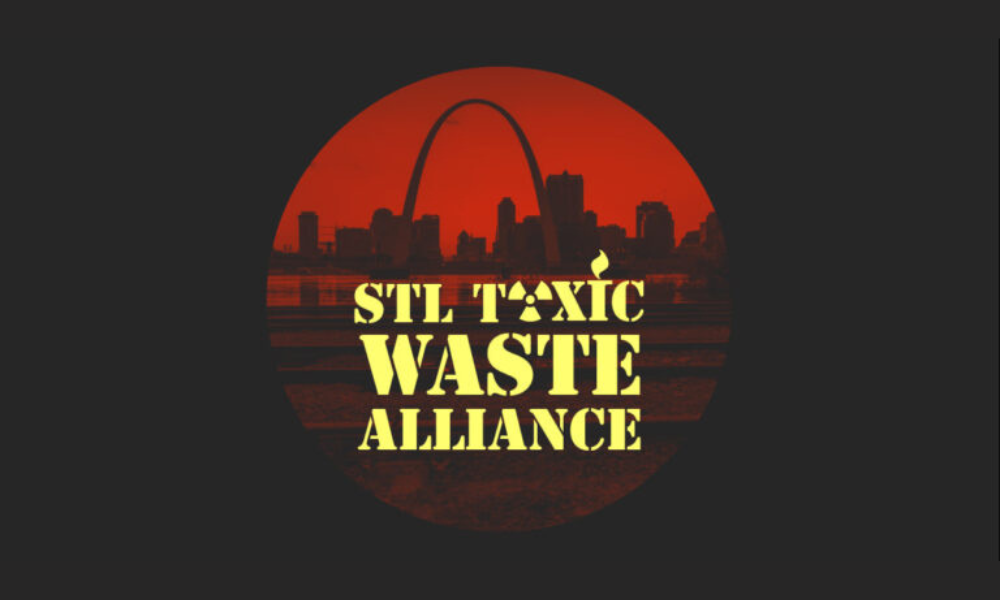MCE has partnered with Just Moms STL to create the STL Toxic Waste Alliance. We believe it is every person’s right to know the communities in which they live, work, worship, or play are safe and free from hazardous wastes. This alliance works to educate and activate people in the St. Louis area around toxic waste contamination in their communities.
Through outreach and training sessions, the alliance aims to inform residents about the contaminants in their neighborhood and ultimately empower citizens to advocate for clean-up and public health protections. We will also work to advance life-saving policies that protect future generations from further harm. The Alliance’s current areas of focus are the Bridgeton West Lake Landfill, Coldwater Creek, and Maline Creek. However, we are regularly receiving reports of other locations of concern, and we will investigate those sites and provide resources about them as we are able.
Be sure to like and follow the STL Toxic Waste Alliance on Facebook.
To learn more about Just Moms STL, please visit their website and social media pages: on Facebook at Just Moms STL and West Lake Landfill and on Twitter @Justmomsstl
Latest Blog Posts
- Radiation Exposure Compensation Act
- Amidst Federal Uncertainty, MoDNR Should Keep Statewide PCB Protections
- People Near Active Mines & Mineral Recycling Plants Need More Protections

A Brief History of Radioactive Material In St. Louis
St. Louis has a long legacy of radioactive contamination related to the production of nuclear weapons. In the 1940s, St. Louis was an integral part of the Manhattan Project. Mallinckrodt Chemical Works processed a majority of the uranium needed for the building of the first atomic bomb at their plant north of downtown St. Louis next to the Mississippi River.
Waste from the downtown Mallinckrodt Plant was transported and stored at a site just north of the current St. Louis-Lambert airport, designated the St. Louis Airport Site (SLAPS), from 1947 until the late 1960s. At this point, it was purchased by Continental Mining and Milling Company and moved to a site half a mile away from SLAPS on Latty Avenue. The radioactive waste was not stored in a sufficiently protective manner at either SLAPS or Latty Avenue, which resulted in the washing of radioactive material into nearby Coldwater Creek. The creek carried this radioactive material into north St. Louis County, contaminating much of the area around the creek. Communities that grew up living and playing in Coldwater Creek are now seeing increased rates of cancer and autoimmune disorders.

From Latty Avenue, most of the radioactive waste was dried and shipped to Canon City, Colorado for further processing. However, about 8,700 tons of barium sulfate cake that was left at the site was subsequently mixed with soil and dumped in the West Lake Landfill in 1973. The Nuclear Regulatory Commission was responsible for testing and site evaluation of West Lake Landfill during the 1980s. In 1989, the St. Louis Post-Dispatch ran a seven-part series on the history of radioactive contamination in the metro-St. Louis area, which raised serious concerns with locals and led to federal action for cleanup of contaminated sites.
The U.S. Department of Energy is responsible for the long-term cleanup and stewardship of radioactive contamination related to the development of nuclear weapons. In 1990, the DOE determined it would clean up the Mallinckrodt site downtown as well as SLAPS and Latty Avenue along Coldwater Creek. The DOE excluded West Lake Landfill from the cleanup list even though the radioactive material at West Lake Landfill came from the Latty Avenue site. The EPA Superfund program took over lead jurisdiction at West Lake Landfill after the DOE refused to put it on the Formerly Utilized Sites Remedial Action Program (FUSRAP) cleanup list.
In 1997, Congress moved the cleanup authority for FUSRAP from the DOE to the Army Corps of Engineers. Since then, FUSRAP in St. Louis has removed more than 1,000,000 cubic yards of radioactive contamination and transported it to out-of-state facilities designed to contain such material.
The EPA reached a decision in 2008 to cap-and-leave the radioactive material permanently. That decision was put on hold in 2009 so site data could be refreshed, including groundwater measurements for radioactivity. The EPA’s 2008 decision did not consider fire a threat to the radioactivity or human health. In 2010, a smoldering fire was reported to the Missouri Department of Natural Resources (DNR), which is ongoing and could smoldering until 2024 or longer. In 2018, the EPA issued a new decision to remove up to 70% of the radioactivity because leaving all of it at the landfill, according to the Agency, was too risky for public health.

The amount of federal government agencies involved in the cleanup of radioactive sites in the St. Louis area can be confusing. So which government agency is in charge of which sites?
- The United States Department of Energy (DOE) was responsible for the cleanup of Weldon Spring and is responsible for its long-term oversight Weldon Spring through the Office of Legacy Management.
- The Nuclear Regulatory Commission (NRC) was responsible for overseeing the cleanup of the Hematite facility in Festus, Missouri. On October 4, 2018, the NRC released the site for unrestricted use following its cleanup.
- The Army Corps of Engineers FUSRAP is responsible for the cleanup of radioactive contamination at the Downtown St. Louis Site, St. Louis Airport Site, Latty Avenue Site in Hazelwood, and vicinity properties contaminated by radioactive material from one of these locations, including Coldwater Creek. Once FUSRAP is finished with its mission, the sites with inaccessible radioactive material it could not remove will will transfer to the the DOE’s Office of Legacy Management for long-term oversight.
- The Environmental Protection Agency (EPA) is responsible for overseeing the cleanup of radioactivity at the West Lake Landfill Superfund site in St. Louis County.

